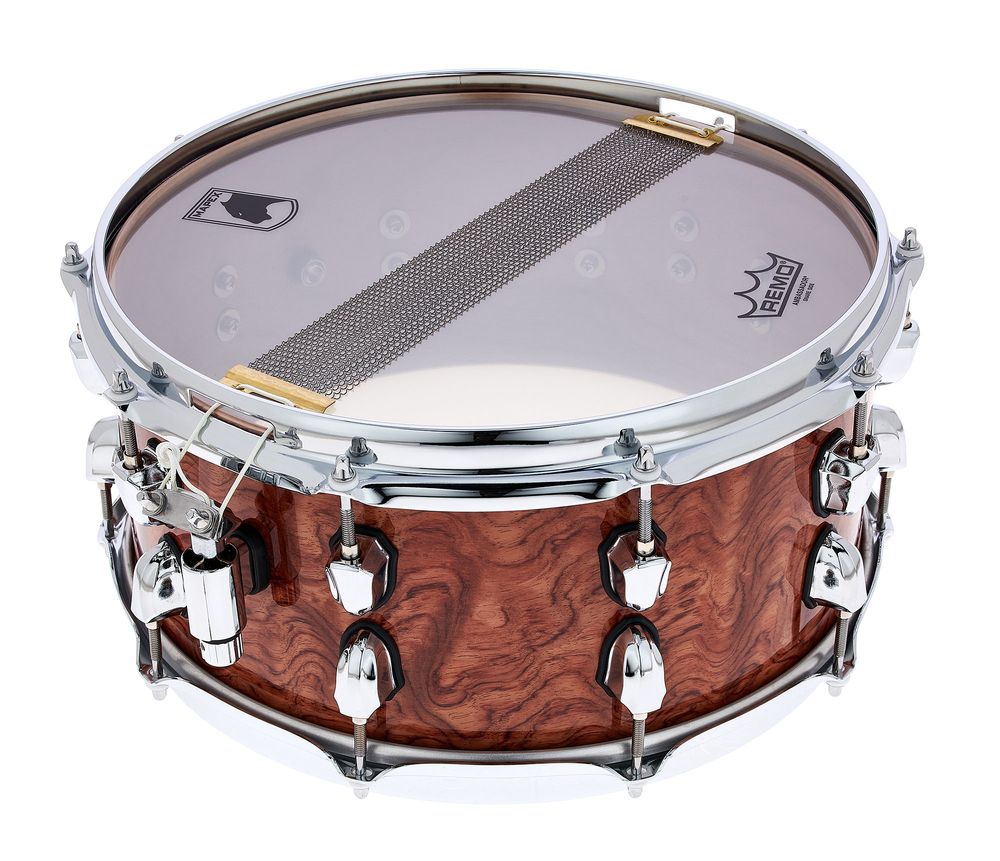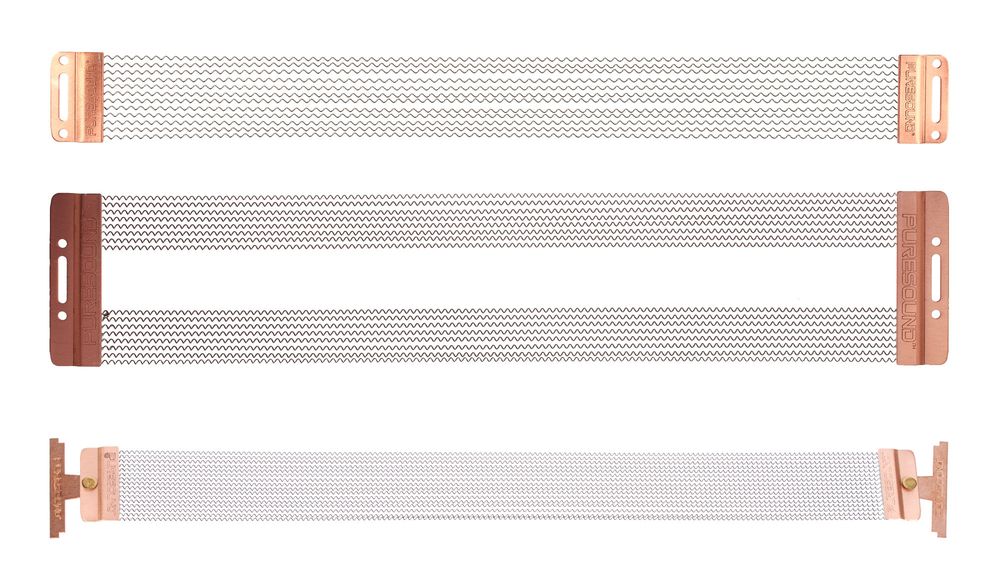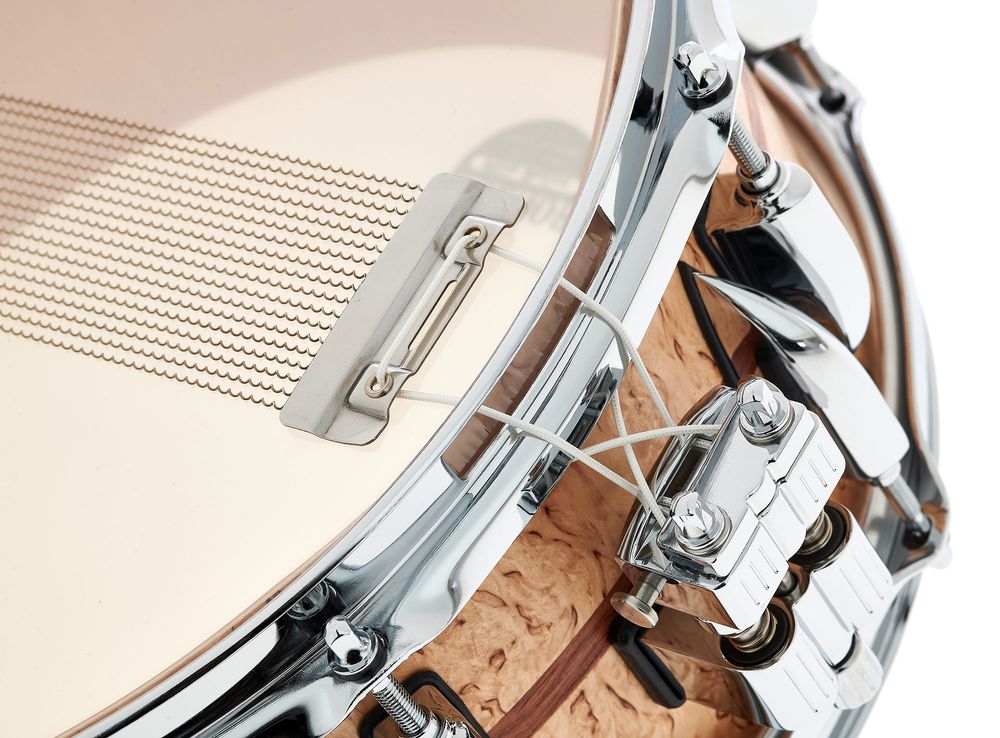3. Snare Wires
Snare wires are the snare drum's defining feature and create its characteristic crisp sound. Strands of coiled wire are stretched across the bottom drumhead so that when struck, they vibrate crisply against it. Each snare note is made up of the sound of the stick striking the top head and the sound of the snares rattling against the bottom head.

The tension of the wires against the head, their material and number all have a great effect on the tone of the snare drum.
Number of Wires

Snare drum wires are available with anything from 8 to 42 wires. The most popular drum kit styles use 12 to 24 wires, which are attached to small metal brackets that attach to the snare strainer and butt plate via wires, snare string or plastic strips. The more wires a snare has the more they influence the drum sound; fewer wires allow a more pure drum sound. Generally, more wires will result in a crisper, brighter sound. While using more wires adds articulation, they can dampen or even choke a drums sound. Changing the wires is one of least expensive ways to dramatically change the sound of a snare drum.
Type of Wire

Snare wires are usually made from coiled wire in a spiral shape that creates crisp bright tone. The most common wires are made from chrome-plated steel. Historically, the snares were made from animal gut stretched across the bottom head. Gut snares had a very dark, dry tone compared to wire snares. Today, the sound is often imitated using plastic wires and the sound is still part of every orchestral snare drummers arsenal. Many different metal processes and materials are used to create snare wires including steel, phosphor bronze, chrome-plated and lacquer-coated alloys. Some manufacturers have begun making snare wire from different gauges of wire, guitar strings, braided wire and wires with different coil patterns. The sound tends to be darker and drier than that heard from chrome-plated coiled steel wires.
Snare Tension

If you use less snare tension the drum tone will become darker and the snares wires will buzz more. This is useful if you are playing a lot of buzz rolls or want to reduce the drums brightness and articulation when playing a slower song. The more you tighten the snares the brighter the tone and greater the drums articulation becomes, which is useful when playing fast music or if you use a lot of rudiments. There are many intermediate tensions that should be explored so you can find your ideal setting. Its also not uncommon for professionals to adjust the snare tension to suit the song being played.
Scottish Pipe Band drummers use a specially designed marching snare drum that has a second mechanism and set of snares on the inside of the drum that press into the batter head and give an incredibly articulate, bright and staccato sound. However, most drums today, and practically all drum kit snares use just one set of metal wires under the resonant head. In Latin music, the wires are often released from the bottom head giving a sound similar to a Timbale. Many drummers also choose to disengage the snare wires for a darker tone when with playing brushes.
Your Contacts
Product Highlights
Offers
Do you like what you're seeing?






